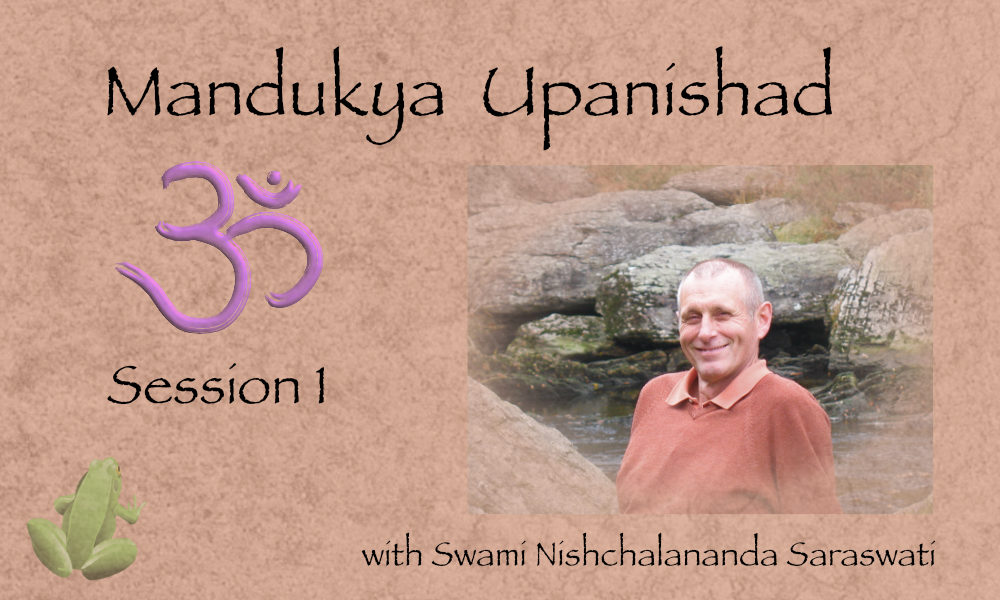The first of a series of five sessions, given by Swami Nishchalananda at Mandala Yoga Ashram in May 2002. This first recording is mostly preamble; setting the scene before actually looking at the Upanishad verse by verse.
The Mandukya Upanishad comes from the Atharvaveda (one of the four Vedas).
It’s only 12 verses long, yet is considered to be one of the most important Upanishads.
Also, it is said to have inspired Adi Shankara in his writing and philosophy.
The word ‘Mandukya’ means ‘Frog’. Why ever might this be called the Frog Upanishad? In the recording below you will hear Swamiji discuss four possible reasons for this apparently strange naming of a spiritual text.
The subject of this Upanishad is the Mantra ‘OM’ which is considered to be the ‘primordial sound’. As such it represents the energy which is behind all matter. Mystical spiritual paths and recent Physics both have a take on this concept, but rather than trying to paraphrase here, listen to Swamiji’s exposition on the topic in the recording..
Most texts in the Sanatana Dharma refer to OM. Jain, Buddhist, Sikh, and Hindu texts all refer to the mantra. But in some other religions, the sound representing the primordial is said to be actually unpronounceable, and in fact in early references of the Vedas OM was referred to as ‘Pranava’ (the humming sound) and not actually named as ‘Om’. As the Upanishads were added to Atharvaveda, Om or Aum became more widely referenced.
The Maitri Upanisad says OM is a symbol of the primordial throb of the Universe. It is a symbol of the sound form of consciousness. As such it is the medium through which the un-manifest, Consciousness, Purusha gives rise to the manifest, Prakriti. This expression of matter through energy vibration, is parallel to modern science. This is using the dualistic way of looking at things though mostly the Upanishads are in the Advaita (non-dual) sphere.
Let OM be the bow,
Dhyanabindu Upanishad
let the mind be the arrow, and let higher consciousness
be the target
The Dhyanabindu Upanishad advocates the use of the mantra OM as a practical tool more than a philosophical concept.
‘Let OM be the bow, let the mind be the arrow, and let higher consciousness be the target’. It gives the instruction to chant OM allowing it to resonate in the mind, but also to reflect on the meaning of OM.
OM is mentioned in many other Upanishads, and also in most of the Puranas (lore and legend ancient texts).
Chanting OM is also suggested in Patanjali’s Yoga Sutras as a significant practice, as representing a symbol of underlying intelligence. In fact the practice is a total dedication of every waking moment to chanting the mantra, reflecting on its meaning, reflecting on it as an underlying resonance to everything. This is clearly an intense practice and difficult in the modern era. Every available moment, chanting OM, feeling resonance, reflecting on the meaning. In this way ‘Awareness turns inwards and all obstacles are overcome.’
In the Bhagavad Gita, chanting OM is suggested as a practice for the dying. But obviously the practice must be already so ingrained, practiced so diligently before, that chanting OM during the dying process is second nature.
We take a look at similar mantras in different spiritual traditions; Amen can be seen to be very close to Aum for example, also Islam and certain Egyptian traditions have similar significant words.
Swamiji ends the session with a guided meditation on the chanting and visualisation of OM.
please enjoy ….


Leave a comment